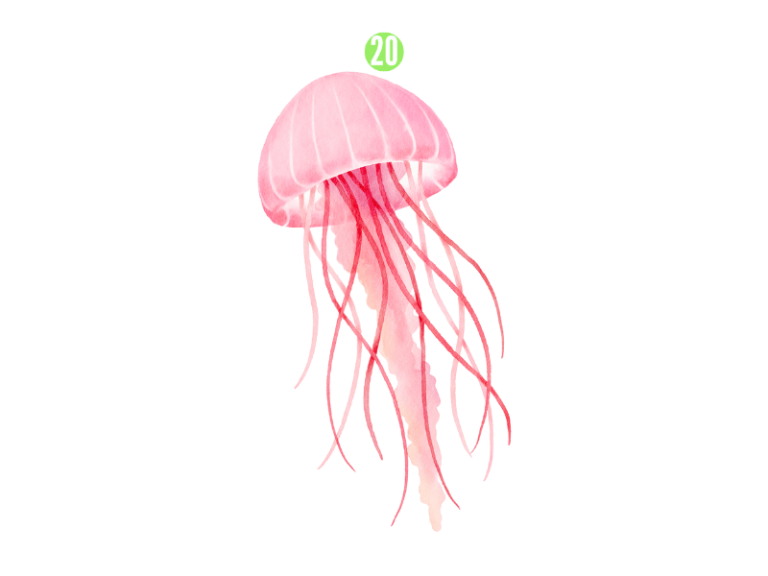In ancient Greece, there was a myth about jellyfish: There was a beautiful maiden who was deceived by a demon. The demon took away her golden hair and replaced it with snake-like hair. The demon then hung the snake-like hair around her head. Eventually, the beautiful maiden transformed into a jellyfish.
In the myth, the snake-like hair referred to the tentacles of the jellyfish. Despite the soft and seemingly weak body of jellyfish, these tentacles are armed with many weapons – stinging cells.
Inside the stinging cells, apart from cytoplasm and nucleus, there is a structure called a cnidocyst. Inside the cnidocyst lies a slender thread-like tube called a cnidocil. On the outside of the stinging cell is a spine, so when a group of small fish or shrimp comes by, they might accidentally touch the spine, causing the cnidocil to shoot out, piercing into the body of the small fish or shrimp. Sometimes it can even entangle small animals. When the cnidocil is ejected from the cnidocyst, it also releases some corrosive venom, numbing the small fish or shrimp, similar to being injected with an anesthetic needle. Sometimes jellyfish can even sting and kill larger fish.
When people touch its tentacles, the secretion makes us feel numb and painful. However, its venom is not very toxic, and it usually gets better after a while.
Jellyfish are also extremely clever at sensing enemies. Even before the enemy approaches, they quickly sink into the sea. People who don’t know might think that jellyfish have good eyesight, but they are actually somewhat blind. However, they have a special “eye.” It turns out there is a type of shrimp that likes to live on jellyfish. When enemies approach, the shrimp sees them first, and when the shrimp moves, the jellyfish follows suit and sinks into the sea.
Jellyfish are a type of jellyfish, with 95% of their body being water. After being caught, jellyfish can be preserved by marinating them in alum and salt, becoming the delicious jellyfish skin.

